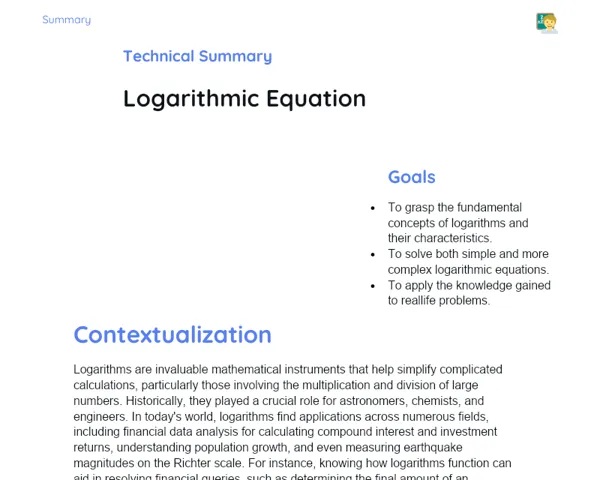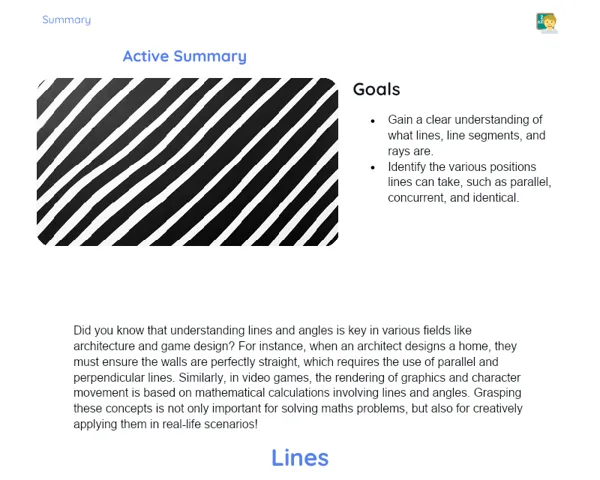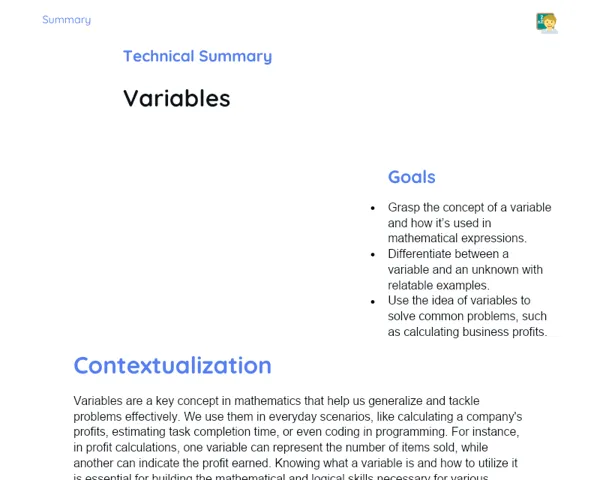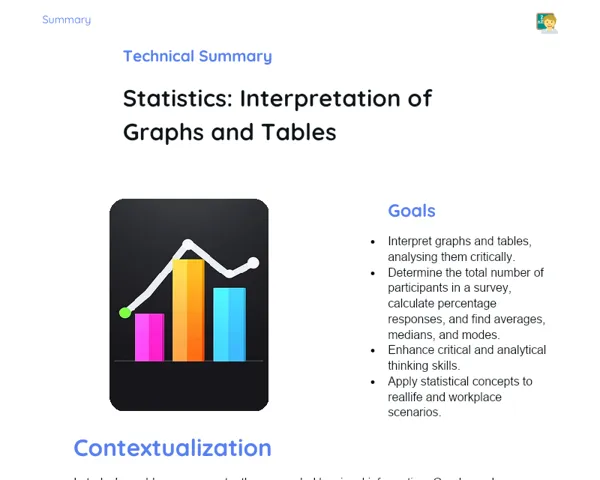Socioemotional Summary Conclusion
Goals
1. Grasp the concept of regular polygons and their main characteristics.
2. Work out how many diagonals pass through the centre of a regular polygon.
3. Calculate both the internal and external angles of regular polygons and tackle related problems.
Contextualization
Did you know that regular polygons like equilateral triangles and hexagons can be seen in historical architecture and the design of honeycombs? 🌠 These shapes are essential not just in mathematics but also in the beauty and structure of our world. Let’s dive into this topic and see how these concepts can be applied in real life! 🚀
Exercising Your Knowledge
Definition of Regular Polygons
Regular polygons are flat geometric shapes where all sides and internal angles are equal. You can often spot these shapes in nature and human-made structures, symbolising balance and symmetry. By understanding regular polygons, we can appreciate the mathematics behind our surroundings and improve our logical problem-solving skills.
-
Polygon: A flat shape with three or more sides.
-
Regularity: All sides and internal angles of a regular polygon are equal.
-
Examples: Equilateral triangles, squares, and regular hexagons are all examples of regular polygons.
Properties of Regular Polygons
The properties of regular polygons enable us to calculate and understand various aspects of these shapes, such as the number of diagonals crossing the centre and the internal and external angles. These concepts are crucial for solving geometric problems and enhancing more advanced mathematical thinking.
-
Number of Sides (n): The total number of sides a polygon has. Every extra side adds complexity and unique properties to the figure.
-
Internal Angles: The sum of the internal angles of a regular polygon is dictated by the formula (n-2) * 180°. Each internal angle can be found by dividing this sum by the number of sides.
-
External Angles: The external angle of a regular polygon is calculated as 360° divided by the number of sides (360° / n).
-
Diagonals Passing Through the Centre: In odd regular polygons, each vertex connects with a diagonal that goes through the centre. With even polygons, there are two diagonals that run through the centre.
RULER Method for Emotional Reflection
The RULER method is a fantastic approach that aids in recognising, understanding, naming, expressing, and regulating our emotions. By applying RULER as we learn about regular polygons, we can boost our focus, teamwork, and problem-solving capabilities, leading to a healthier and more effective learning environment.
-
Recognise: Identify the emotions that arise when tackling mathematical challenges.
-
Understand: Reflect on where these emotions stem from and how they impact our performance.
-
Name: Assign labels to these emotions, like frustration, excitement, or nerves, for better management.
-
Express: Communicate these emotions clearly and respectfully with classmates and teachers.
-
Regulate: Employ strategies to handle and balance emotions, keeping focus and motivation intact.
Key Terms
-
Regular Polygon: A flat geometric shape with all sides and internal angles equal.
-
Internal Angle: The angle formed between two consecutive sides within the polygon.
-
External Angle: The angle formed between one side and the extension of the adjacent side outside the polygon.
-
Diagonals: Line segments that connect two non-consecutive vertices of a polygon.
For Reflection
-
How did you feel while learning about regular polygons and solving relevant problems? 🌠
-
What RULER strategies did you employ to manage your emotions during the activities? 📚
-
In what ways can knowledge of regular polygons and emotional regulation aid you in other aspects of life and studies? 🚀
Important Conclusions
-
Regular polygons are shapes with all sides and internal angles equal, including equilateral triangles, squares, and regular hexagons.
-
We learned to determine the number of diagonals that pass through the centre of a regular polygon, as well as the internal and external angles.
-
We utilised the RULER method to recognise, understand, name, express, and manage our emotions throughout the learning experience.
Impacts on Society
Regular polygons are prevalent in our daily lives, from the architecture of buildings and monuments to the shapes we observe in nature, like honeycombs. These concepts deepen our understanding of the world around us, helping us appreciate the beauty and practicality of geometric shapes.
Furthermore, the knowledge we gain about regular polygons can be applied in various professional fields such as engineering, design, and architecture. The ability to approach mathematical problems methodically and logically is a valuable skill that contributes to students’ personal and professional growth, equipping them for future challenges.
Dealing with Emotions
To manage emotions while studying regular polygons, implement the RULER method at home. Begin by recognising your feelings while you learn, whether it's frustration or excitement. Reflect on the reasons behind these emotions and label them accurately. Share your feelings appropriately, perhaps by chatting to a friend or jotting them down in a journal. Finally, practice regulating your emotions using techniques like taking short breaks, deep breathing exercises, or setting bite-sized goals to maintain motivation and focus.
Study Tips
-
Create mind maps summarising the properties of regular polygons and the formulas for calculating angles.
-
Practice solving various problems related to regular polygons, searching for visual examples online or in geometry textbooks.
-
Establish a study routine with clear and attainable goals, using guided meditation moments to enhance focus and concentration.



